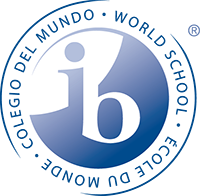HSC Physics

Year 11 Syllabus
MODULE 1 - Kinematics
Studying kinematics involves observing, describing, measuring, and analysing motion. It focuses only on the motion of objects, such as their velocity (rate of change of position) or acceleration (rate of change of velocity). It does not consider the masses of objects or the forces acting on them, nor does it seek to explain why the motion is produced.
Core Content:
- Motion in a straight line
- Motion on a plane
MODULE 2 - Dynamics
Dynamics describes the fundamental laws (conservation of energy and momentum) which govern how interactions (forces and energy transfers and transformations) between particles result in changes in their motion.
Core Content:
- Forces
- Forces, acceleration and energy
- Momentum, energy and simple systems
MODULE 3 - Waves and Thermodynamics
This module examines the nature and behaviour of mechanical and electromagnetic waves in a variety of contexts and situations. Thermodynamics examines the transfer of thermal energy, making use of the particle model of matter to understand heat in terms of the kinetic energy of particles. This is then extended through the concepts of specific heat capacity, thermal conduction and latent heat.
Core Content:
- Wave properties
- Wave behaviour
- Sound waves
- Ray model of light
- Thermodynamics
MODULE 4 - Electricity and Magnetism
Students are introduced to the concept of using lines to visualise the direction and strength of electric fields around various charged objects. Mathematical models are used in conjunction with field diagrams to qualitatively and quantitatively describe the interaction between charged particles.
Core Content:
- Electrostatics
- Electric circuits
- Magnetism
Year 12 Syllabus
MODULE 5 - Advanced Mechanics
This module extends students understanding of mechanics. It extends the analysis of motion from one-dimensional and uniformly accelerated motion covered in modules 1 and 2 to include two- and three-dimensional motion, non-uniform acceleration, and special cases such as circular and projectile motion.
Core Content:
- Projectile motion
- Circular motion
- Motion in gravitational fields
MODULE 6 - Electromagnetism
Discoveries about the interactions that take place between charged particles and electric and magnetic fields not only produced significant advances in physics, but also led to significant technological developments. These developments include the generation and distribution of electricity, and the invention of numerous devices that convert electrical energy into other forms of energy.
Core Content:
- Charged particles, conductors, and electric and magnetic fields
- The motor effect
- Electromagnetic induction
- Applications of the motor effect
MODULE 7 - The Nature of Light
The theories and models about light have evolved over time; through general wave behaviour, electromagnetic waves and quantum properties, and these have set the foundation for special relativity. This topic is set on the foundations of Module 6 Electromagnetism, the unification of electricity and magnetism.
Core Content:
- The electromagnetic spectrum
- The wave model of light
- The quantum model of light
- Light and special relativity
MODULE 8 - From the Universe to the Atom
This module broadly covers astronomy, atomic physics, nuclear physics and particle physics. The initial focus is on the origin of the universe to the formation of matters, celestial systems and evolution of stars. The development of the atomic theory is then retraced from the plum pudding model by J. J. Thomson to the current model. The properties of the nucleus is then investigated, followed by the development of the Standard Model of matter.
Core Content:
- Origins of the elements
- Structure of the atom
- Quantum mechanical nature of the atom
- Properties of the nucleus
- Deep inside the atom
Useful Physics Learning Resources
- Khan Academy
- The Physics Classroom
- CERN
- HyperPhysics
- Particle Physics Masterclass
- PhysicsHandbook.com
- The Particle Adventure
You can find more websites of interest relating to physics on our Resources page.









